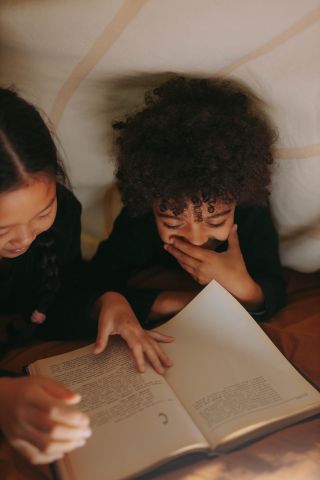Sex
What Happens When We Ban Books?
Reading books about other cultures raises civic awareness in children.
Posted May 17, 2023 Reviewed by Vanessa Lancaster
Key points
- Almost 50 percent of banned books have a protagonist who is a minority.
- Children exposed to diverse books tend to be more civic-minded and outspoken community members.
- Reading banned books does not increase violence or decrease the likelihood of success in school.

Being a parent requires a leap of faith whenever your child separates from you.
We hope that our children will make the right choices in a world where social media has made the options and dangers at their disposal multiply in a way that we would never have imagined in our childhood.
But, for a growing number of parents, the local library and the school book fair hold their own sort of danger by exposing children to books whose subject matter or word choice parents are not comfortable with.
According to PEN America’s June 2022 Index of School Book Bans, bans occurred in 138 school districts in 32 states, which affects approximately four million students. Most book bans occurred in Texas (750-1,000 bans) and Florida (501-750 bans), followed by Tennessee and Pennsylvania.
Some have suggested the need for parental intervention due to the sexual undertones that have invaded the “Young Adult'' genre in books such as Sara Shepard’s Pretty Little Liars or Paul Ruditis’s tween novel Rainbow Party. The latter involves a festive get-together where each girl puts on a different shade of lipstick, and at the end of the party, what remains is a set of somewhat explicit clues about how the evening was spent. In the case of these two books, it is easy to see how a parent might intervene to determine what they are comfortable with their child being exposed to.
A frightening trend emerges when you look at the common themes of banned books. According to PEN America (2022):
- Forty-one percent of banned books explicitly address LGBTQ+ topics and/or have prominent LGBTQ+ characters.
- Forty percent of banned books have a main or prominent secondary character of color.
- Twenty-one percent directly address racism.
- Twenty-two percent of books contain the topics of teen pregnancy, sexual assault, or abortion.
- And although half of the banned books were young adult books, a significant number of books that were also banned were picture books or early reader chapter books.
Suddenly, what looks like a difference in parenting styles starts looking a lot like a subconscious bias–at best. The problem isn’t limited to what books are being banned but also extends to how these books are being banned.
Banning books is hardly a new phenomenon. Yet during the 50s and 60s, what would start as one parent reacting to a book and sharing their concerns with another parent or two, or even their local religious organization, now operates from a quite different angle.
As of 2022, there were at least eight groups in the United States that have 300 local or regional chapters and share information advising members to “swarm Board of Education meetings,” advocate that libraries use rating systems to categorize what is and is not appropriate to offer to their readers, encourage the use of inflammatory language such as “grooming” and “pornography,” and have a history of filing complaints against school officials, teachers, and librarians.
What About the Children?
There is certainly a valid argument to be made about protecting children from being exposed to graphic subject matter, especially that which is sexual or violent in nature.
The problem with protecting children too much from the world outside of our own comfort bubble is that we limit their exposure to cultures and belief systems outside of our own experiences.
Thus far, research heavily supports the idea that children exposed to "banned books" exhibit more pro-social, pro-civic behaviors (Ferguson, 2014). Reading banned books does not predict GPA or the commission of violent or nonviolent crimes.
In fact, it seems as if exposing our children to real-world problems in an age-appropriate way only serves to make them more mindful of those who are different than they are, in essence, making them more thoughtful citizens.
References
Meehan, K., and Friedman, J. (2023). Banned in the USA: State Laws Supercharge Book Suppression in Schools. https://pen.org/report/banned-in-the-usa-state-laws-supercharge-book-suppression-in-schools/
Agee, J. (1999). "There it was, that one sex scene": English teachers on censorship. English Journal, 89(2), 61-69.
Church, S. (1997). When values clash: Learning from controversy. Language Arts, 74(7), 52531.
Mariott, D.W. (2013) Banning books hinders discourse in our communities. University Wire. Web.
Grafton, E. (2013). Book banning needs to be a thing of the past. University Wire. Web.
Ferguson, C. J. (2014). Is reading “banned” books associated with behavior problems in young readers? The influence of controversial young adult books on the psychological well-being of adolescents. Psychology of Aesthetics, Creativity, and the Arts, 8(3), 354–362.


